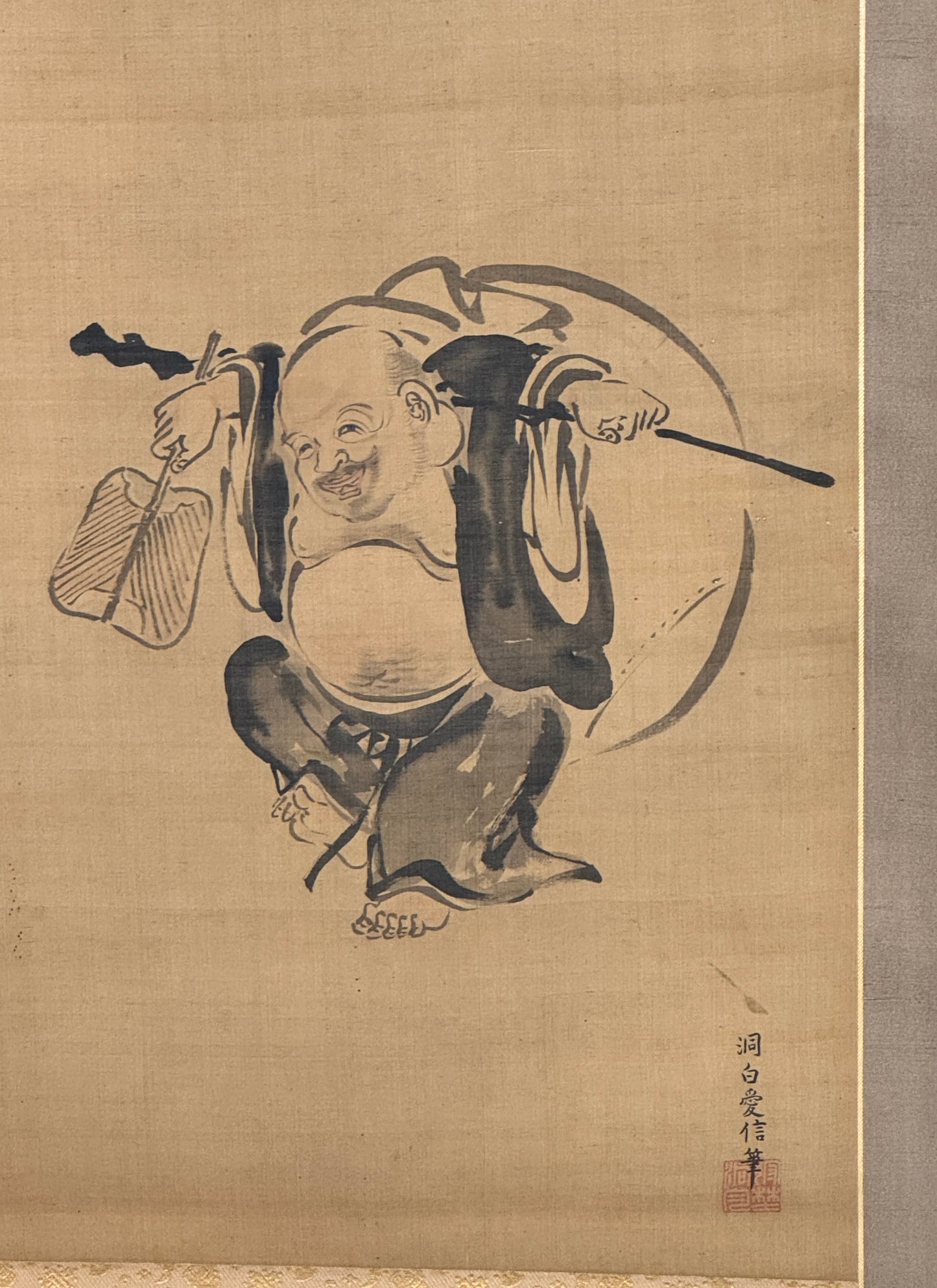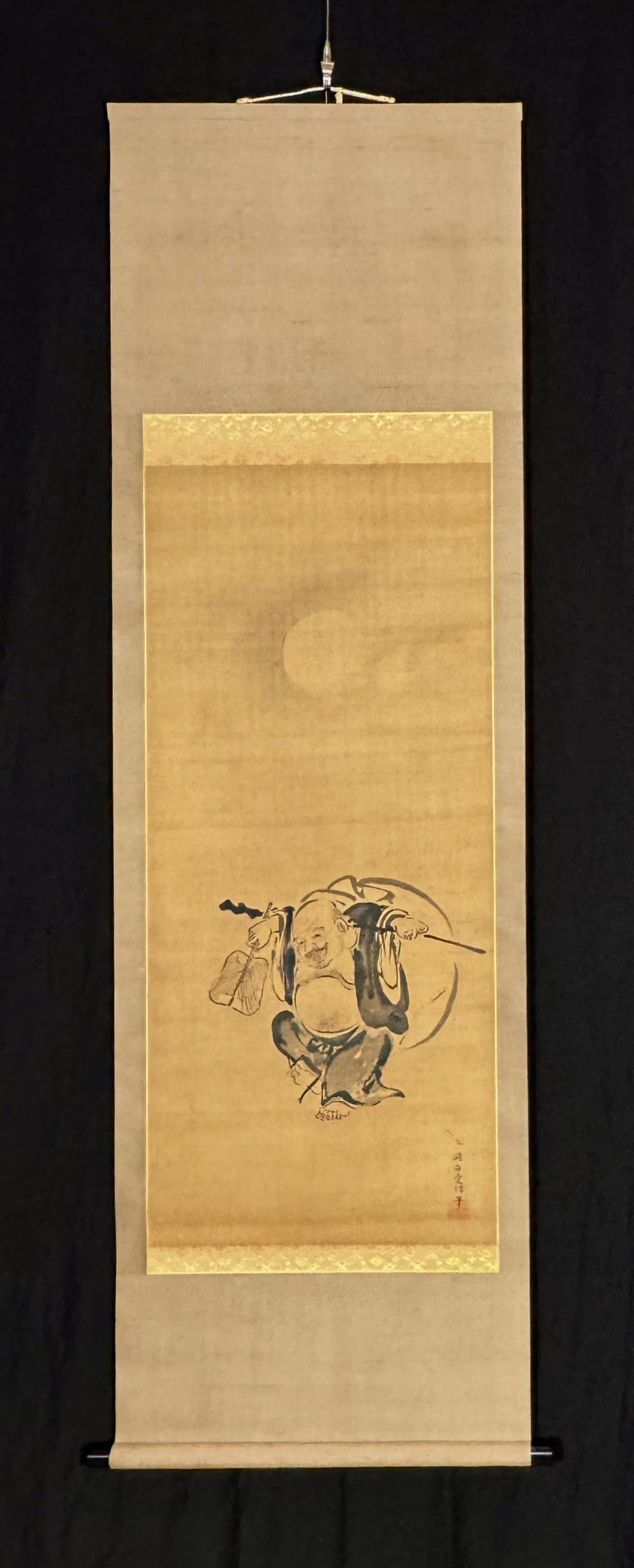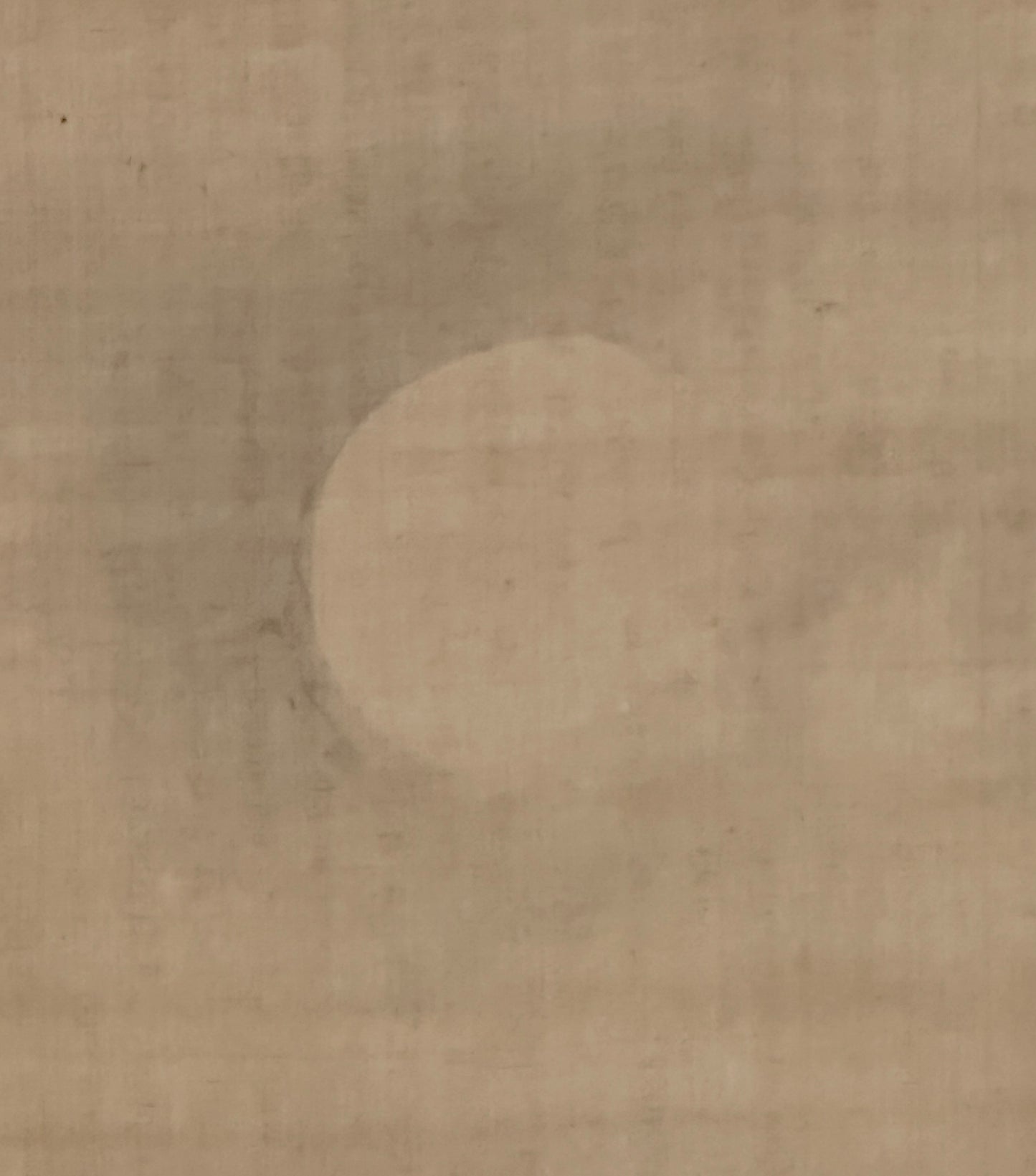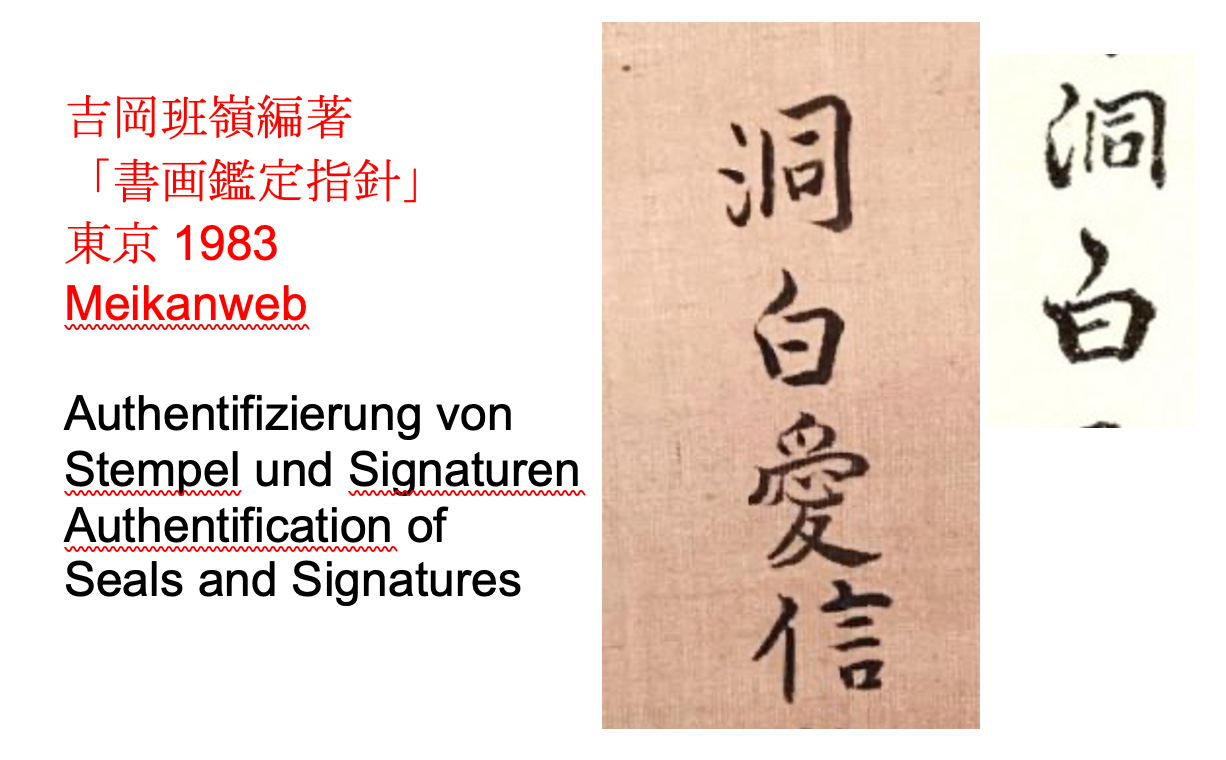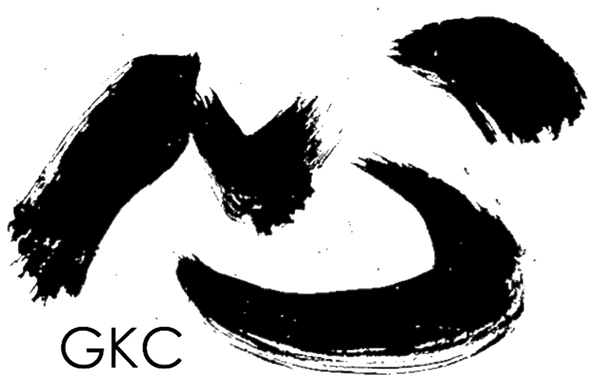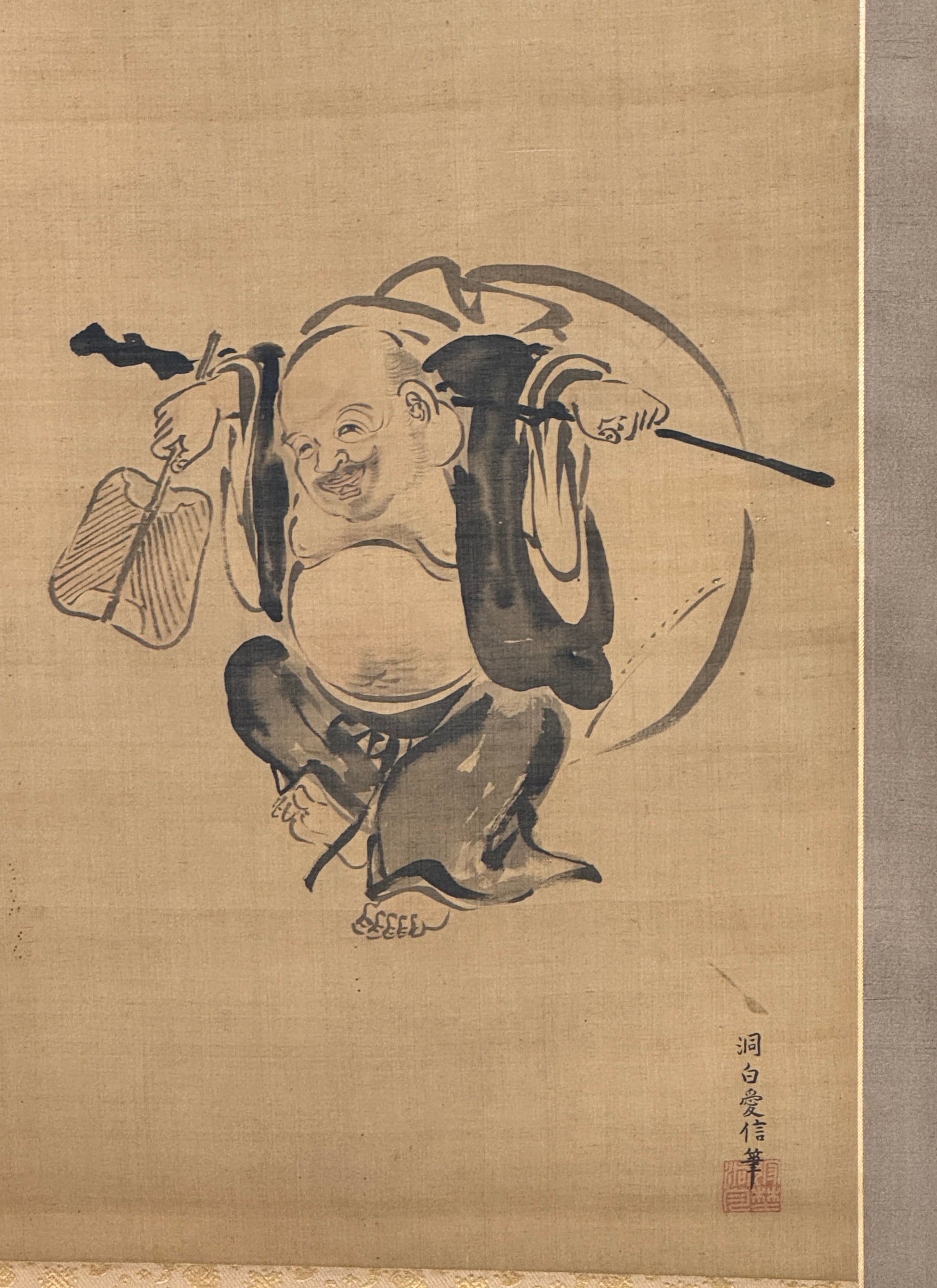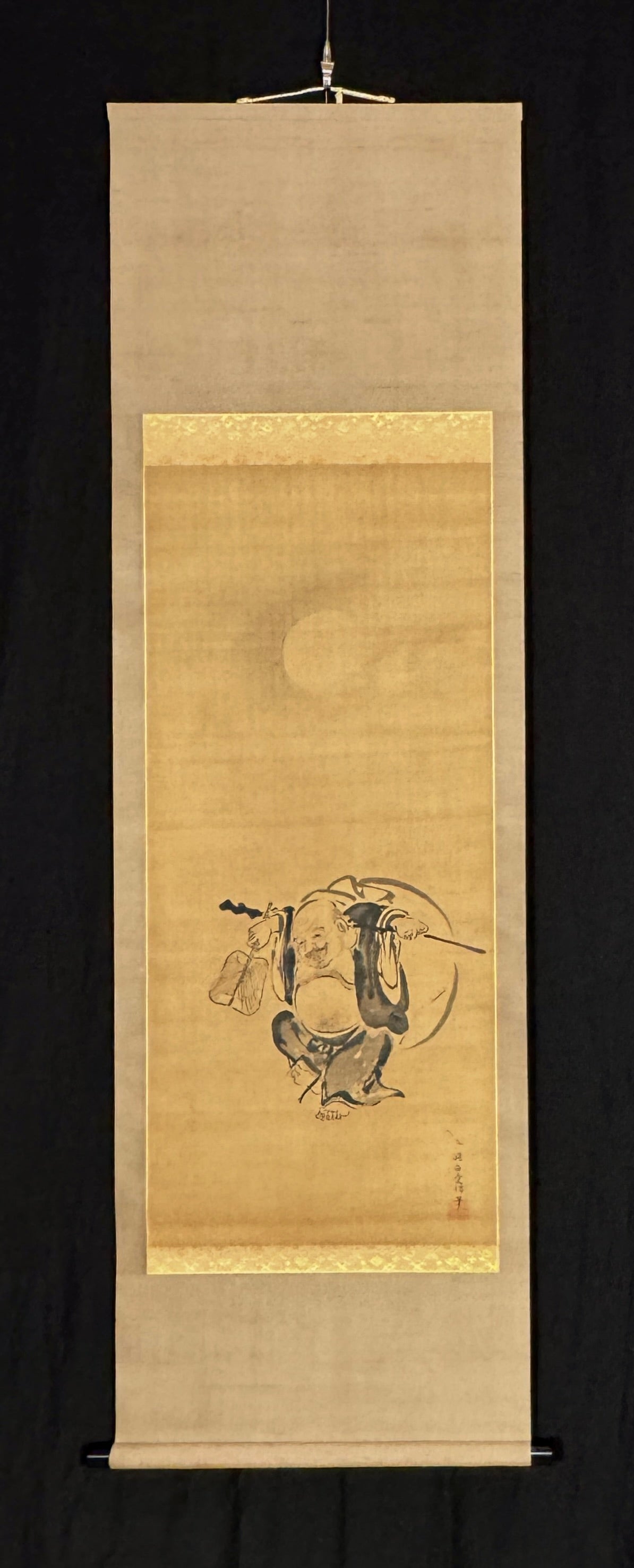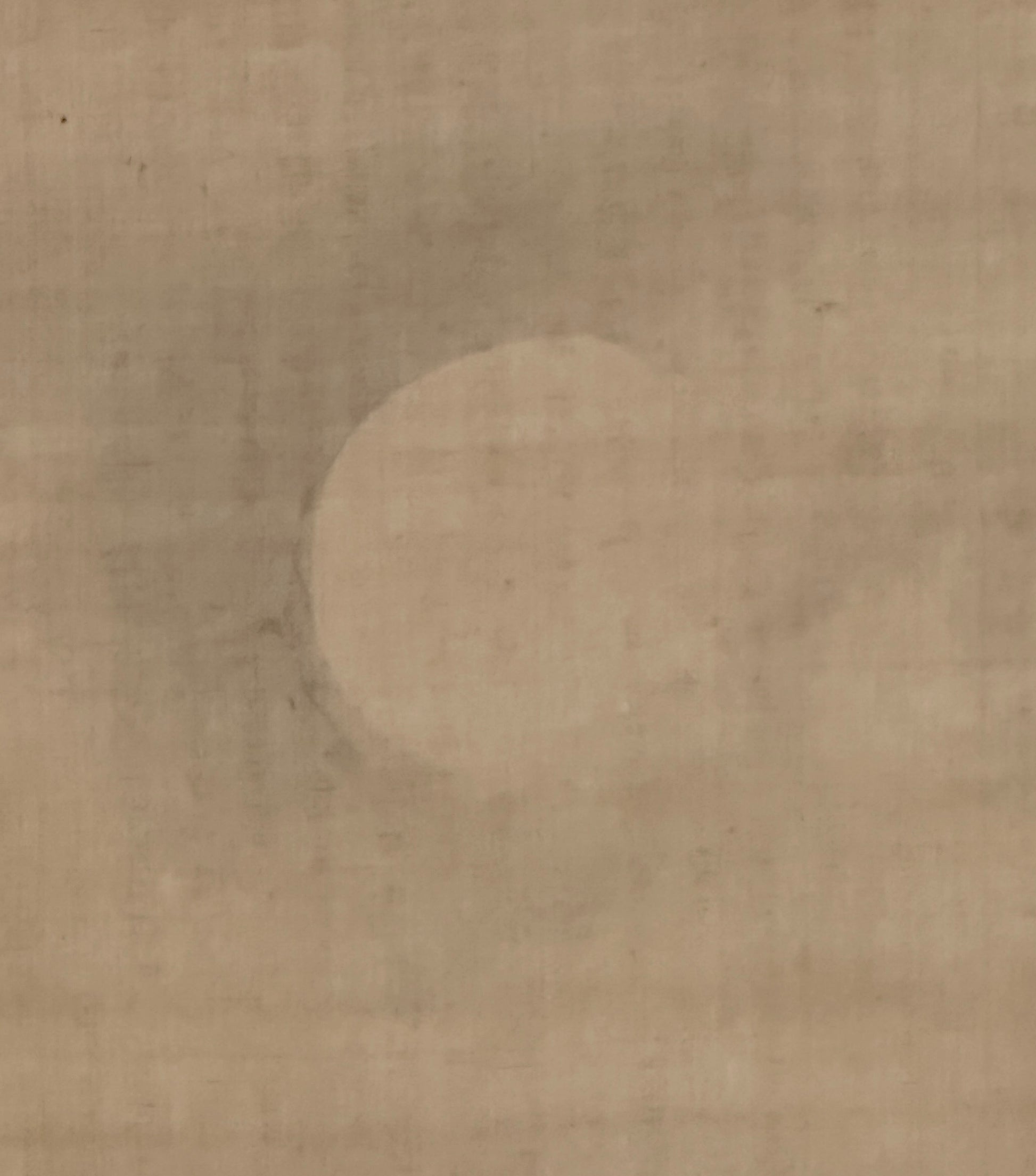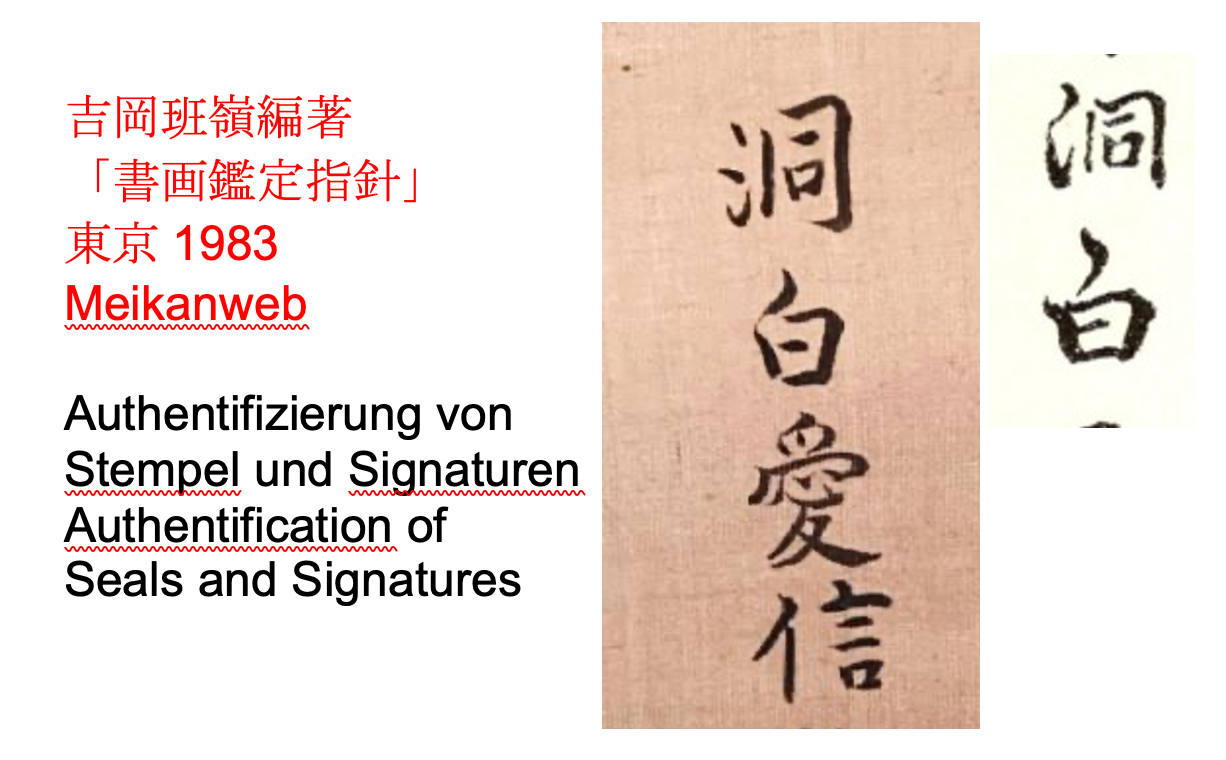Guignard Kyoto Collection
Hotei in the moonlight | Kanō Dōhaku Chikanobu狩野洞白愛信 | 1792-1821
Hotei in the moonlight | Kanō Dōhaku Chikanobu狩野洞白愛信 | 1792-1821
Couldn't load pickup availability
There is a bit of a problem with the name of this painter. He is known primarily as Dōhaku. But the second name is read as "Chikanobu" or with other characters 美信as "Nakanobu", "Naganobu" etc. Dōhaku was highly respected in his time because he became the head of the Surugadai studio - in the 5th generation. Studio heads were not necessarily Kanō masters in the bloodline; they had to distinguish themselves primarily through achievement.
The Kanō school became so powerful and dominated Japanese painting for four hundred years because it was based on a model principle. Great masters of the school created models of selected motifs. The task of the hundreds of employees in the studios was to copy these models faithfully. Individuality was not required. This ensured a high level of composition, which had a positive effect on the trade (and the Kanō school had a lot of knowledge and skill in this regard).
The dancing god of fortune Hotei (one of the Seven Gods of Fortune, of Chinese origin, who are particularly popular at New Year) is a frequently painted motif that follows a model down to the smallest details: the way the god lays his walking stick across his back and lets his right hand, which holds the clearly Chinese-shaped fan, hang down, is just as standard as the bent right dancing leg and the voluminous sack on his back. What is not present in other pictures of this dancing Hotei (so this is an addition by Dōhaku) is the full moon. But here it has a deep formal relationship to the depiction of this god of fortune: the sack, the belly, the bald head are just as round as the moon - and the whole figure is inscribed in a circle. The concept of this depiction, which was once created by a great Kanō master, is excellent, and so it makes perfect sense that the picture was painted again and again in many studios of Kanō painters.
